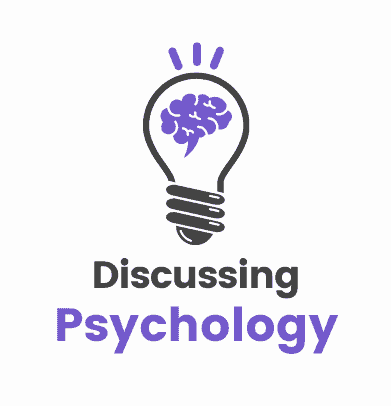Maladaptive daydreaming (MD) and Attention Deficit Hyperactivity Disorder (ADHD) have many overlapping symptoms.
Both can disrupt focus, lead to preoccupation with internal thoughts and impair completion of your daily tasks and goals.
But that doesn’t mean they’re the same condition. Let’s take a look at what separates the two below.
The difference between ADHD and maladaptive daydreaming
Broadly, the main difference between ADHD and maladaptive daydreaming comes down to control.
Maladaptive daydreamers typically choose to enter daydreams, while those with ADHD passively daydream without self-awareness.
In the literature for both conditions, you’ll come across terms like:
- Mind wandering
- Inattentiveness
- Absorption
- Task-unrelated thoughts
These all describe the state of focusing one’s attention internally rather than on the external world.
It’s true that inattentiveness is a key aspect of both conditions, but the nature of that inattentive thought is very different.
A study from 2022 investigated patients with ADHD and those with maladaptive daydreaming, and found that their tendency to focus on thoughts and fantasies differed in three key ways:
| Daydreaming (MD) | Mind Wandering (ADHD) | |
| Active or passive | Actively chosen | Happens passively |
| Self-awareness | Yes | No |
| Content | Elaborate and extensive | Fleeting and unrelated |
Active vs Passive
Patients with MD consciously choose to daydream, while mind-wandering in ADHD happens spontaneously.
Daydreamers are aware that their attention has shifted away from the real world and into the realm of fantasy.
Self-Awareness
Mind wandering does not involve this level of self-awareness for those suffering from ADHD, and patients with ADHD are usually only made aware that their attention has wandered when something brings their attention back to the present.
Content
Daydreams are long, detailed, and continuous, whereas the inattentiveness found in ADHD is fleeting, often random, and does not return to the same thoughts or themes each time.

To summarize, saying that maladaptive daydreaming leads to inattentiveness and difficulty concentrating is true but misses the point.
Daydreamers choose to engage in highly elaborate and long-running fantasies.
The fact that this causes them to have difficulty concentrating is a secondary side-effect, not the main issue.
However, these difficulties with concentration may lead to a diagnosis of ADHD.
Comorbidity
One study shows that the majority (77%) of patients with MD are also diagnosed with ADHD, indicating a strong link between the two conditions or possibly that Maladaptive Daydreaming can lead to a diagnosis of ADHD.
However, the reverse is not true: only 20.5% of adults with ADHD are also living with MD.
This asymmetrical relationship suggests that maladaptive daydreaming could increase your likelihood of being diagnosed with ADHD, but that having ADHD doesn’t mean you are likely to be a maladaptive daydreamer.
To understand why, we need to look at the kinds of thoughts that cause patients with both MD and ADHD to appear distracted and inattentive.
Causes
For additional evidence that ADHD and maladaptive daydreaming are unrelated conditions, one need look no further than the respective causes for each condition.
Childhood trauma is at the heart of why MD develops:
Adverse experiences like abuse or neglect cause a person to retreat inwards and develop elaborate fantasies as an escape. This habit then persists.
Other psychological and situational factors also play a role in the development of MD, including:
- The capacity for intense, vivid imagination
- Strong feelings of shame
- Isolation and feelings of loneliness.
The causes of ADHD, by contrast, are thought to be much more biological.
While not fully understood, researchers believe potential risk factors for the development of ADHD include:
- Genetics
- Illnesses
- Exposure to harmful substances in Utero.
Treatment
ADHD
While there is no cure for ADHD, medication can be used to effectively manage its symptoms.
A class of medication called stimulants can help to increase a sufferers’ focus and reduce hyperactivity.
Managing the condition also involves making behavioral changes like establishing routines and using planners, timers, and alarms to help keep your mind on track.
Maladaptive Daydreaming
Treatment for MD can involve therapy to help a patient process painful childhood memories.
As yet, there’s no recommended form of treatment for maladaptive daydreaming, but both cognitive behavioral therapy (CBT) and dialectical behavioral therapy (DBT) seem like promising options.
Learning new skills such as mindfulness can also help a patient with MD gain a greater control over their own thoughts, helping them fight the tendency to daydream.
Looking ahead
Now, it’s important to note that research into maladaptive daydreaming is still relatively scarce, and nearly all of the research has been published by the same group of researchers.
It stands to reason that the people who coined the term maladaptive daydreaming think it is a valid diagnosis and not simply a subtype of ADHD: it’s either that or conclude that they’ve been barking up the wrong tree for the last two decades.
However, the research that we have so far does point to some important gaps in our understanding:
First, stimulants that can effectively treat ADHD have been shown to have no impact on levels of daydreaming.
Second, patients who see themselves as maladaptive daydreamers report significant distress when they are labelled with a diagnosis that does not match their day-to-day experience.
These findings suggest that current diagnostic and treatment methods are not meeting the needs of people living with maladaptive daydreaming.
Future research needs to look beyond surface level similarities and dive deeper into the unique causes and possible treatment methods for this under-recognized condition.
- Ferrante, E., Marino, A., Guglielmucci, F., & Schimmenti, A. (2022). The mediating role of dissociation and shame in the relationship between emotional trauma and maladaptive daydreaming. Psychology of Consciousness: Theory, Research, and Practice, 9(1), 27–39. https://doi.org/10.1037/cns0000253
- Low, K. (2022, March 9). Causes and risk factors of attention-deficit hyperactivity disorder (ADHD). Verywell Mind. https://www.verywellmind.com/what-causes-adhd-20465
- Ross, C. A., West, M. J., & Somer, E. (2019). Self-reported medication and recreational drug effectiveness in maladaptive daydreaming. The Journal of Nervous and Mental Disease. https://doi.org/10.1097/NMD.0000000000001091
- Sinfield, J. (2022, January 17). How is ADHD treated for children and adults? Verywell Mind. https://www.verywellmind.com/adhd-treatment-4157278
- Somer, E. (2018). Maladaptive daydreaming: Ontological analysis, treatment rationale; a pilot case report. Frontiers in the Psychotherapy of Trauma and Dissociation, 1,.1–22. https://doi.org/10.XXXX/ftpd.2017.0006.
- Somer, E., Abu-Rayya, H. M. & B. Reut. (2021). Childhood trauma and maladaptive daydreaming: Fantasy functions and themes in a multi-country sample. Journal of Trauma & Dissociation, 22(3), 288–303. https://doi.org/10.1080/15299732.2020.1809599
- Somer, E., Soffer-Dudek, N., & Ross, C. (2017). The comorbidity of daydreaming disorder (maladaptive daydreaming). Journal of Nervous & Mental Disease, 205(7), 525–530. https://doi.org/10.1097/nmd.0000000000000685
- Theodor‐Katz, N., Somer, E., Hesseg, R. M., & Soffer‐Dudek, N. (2022). Could immersive daydreaming underlie a deficit in attention? The prevalence and characteristics of maladaptive daydreaming in individuals with attention‐deficit/hyperactivity disorder. Journal of Clinical Psychology, 78(11), 2309–2328. https://doi.org/10.1002/jclp.23355

